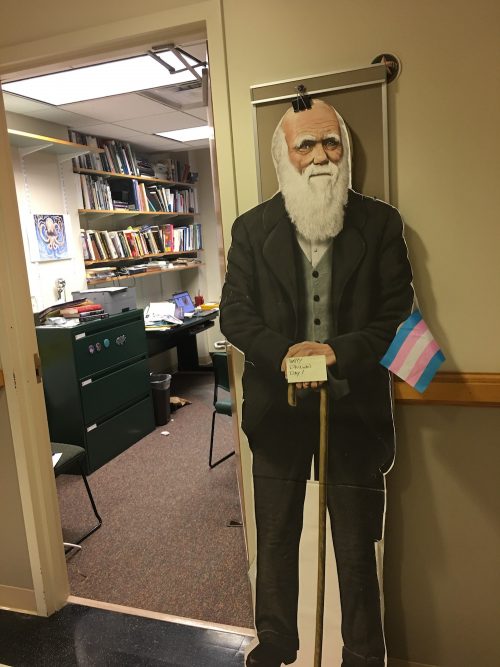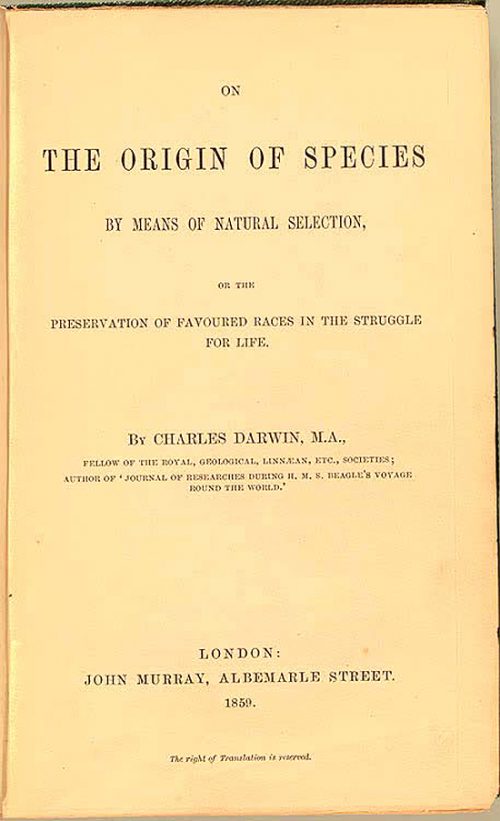Charles Darwin got to stretch his legs a bit today — he’s pretty spry for a 211 year old man. I let him hang out in the hallway outside my office to greet students passing by.
The illustration is by Carl Buell, and you can get your own Chuckie D image.






